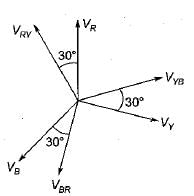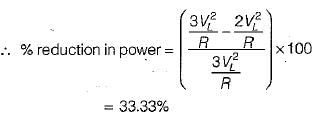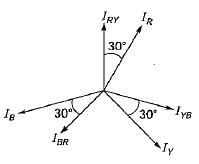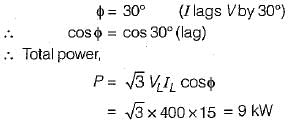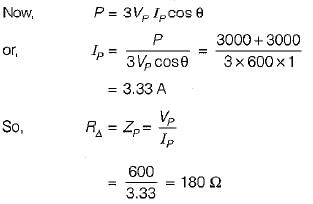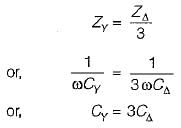Test: Poly Phase AC Circuit - 1 - Electronics and Communication Engineering (ECE) MCQ
10 Questions MCQ Test - Test: Poly Phase AC Circuit - 1
Which of the following is not true for a three-phase system compared to 1-φ system?
In a balanced three-phase star connected system, the phase voltages
Three identical resistances are connected in delta against a balanced three-phase voltage supply. If one of the resistances be removed, the reduction in the power will be
A balanced Y-connected load is supplied from a balanced 3-phase 400 V system. If the current in each phase is 15 A and lags the phase voltage by 30°, the total power will be
In a balanced three-phase circuit VAN= 1500 ∠20° V and VCN = 1500 ∠-100° V.
The value of VBN will be
The value of the rms line voltage VL for the below circuit if the rms line voltage is 100 V will be
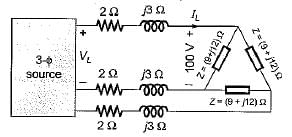
Two wattmeters, both have reading of 3 kW when connected for the two-wattmeter method with current coils in lines A and B of a 600 V ABC circuit having a balanced A load. The Δ phase impedance will be
Three capacitances, each of C/3 Farads are connected in delta. Their equivalent star value for each capacitance is
The instantaneous value of currents in both phases B and C of a 3-phase balanced system are -20 A. For a phase sequence of ABC, the instantaneous value of current in phase A is


